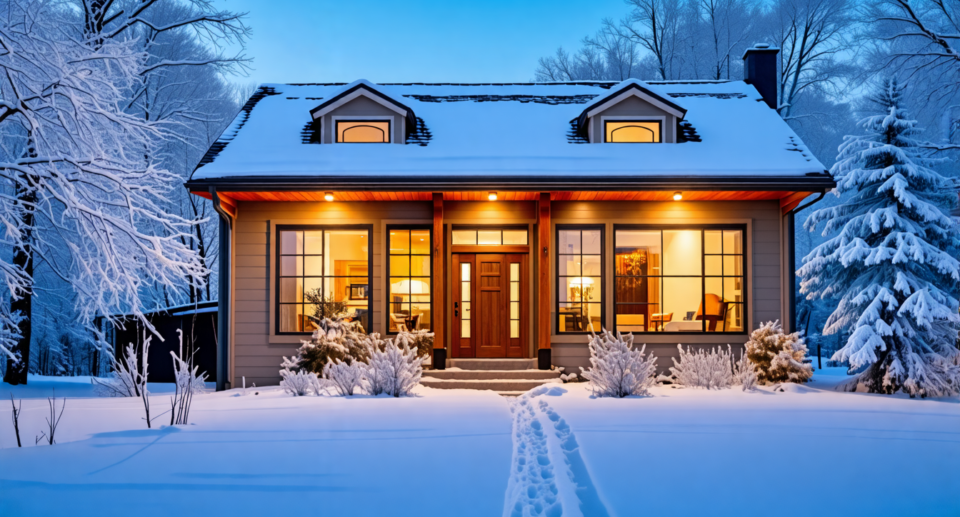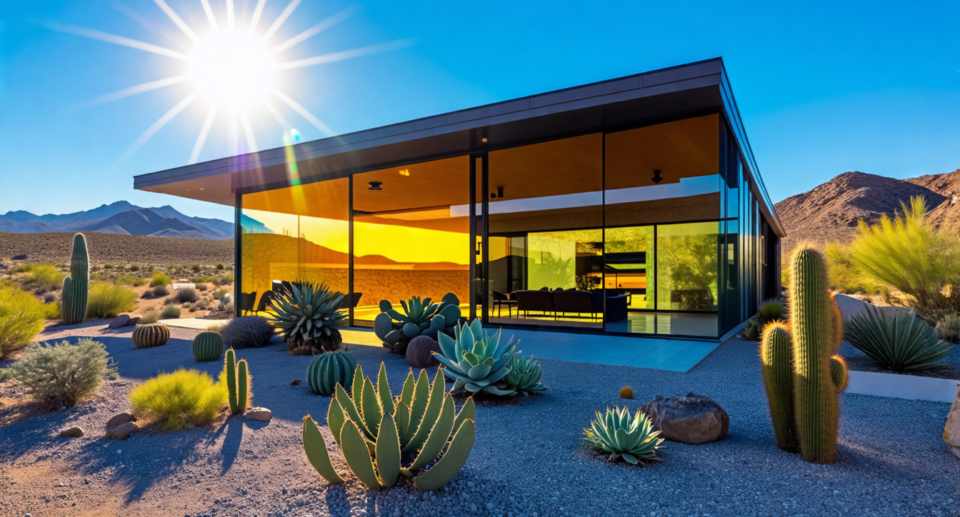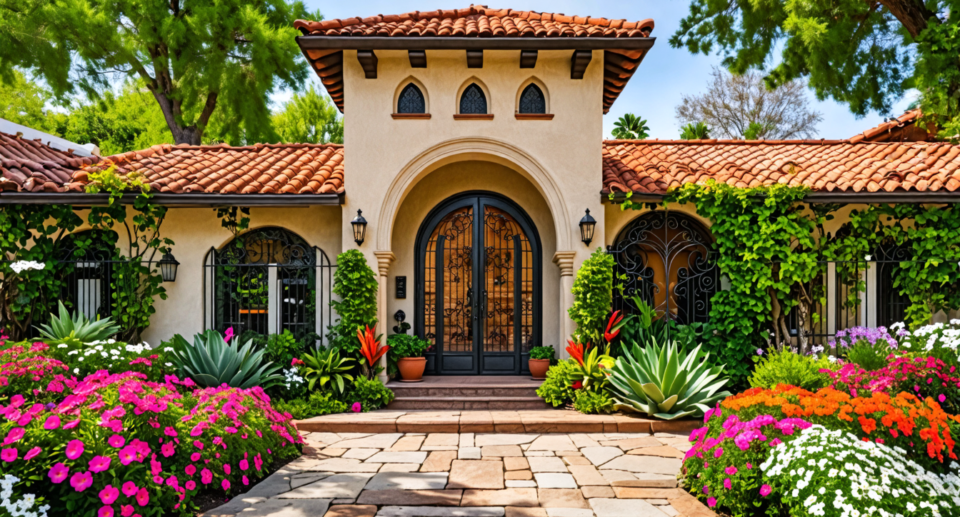Winter-Resistant Doors and Windows: Essential Upgrades for Midwest Homes

In the Midwest winter season when temperatures plummet and snowstorms are occurring, homeowners face the challenge of ensuring their homes stay cozy and energy efficient amidst the erratic weather conditions, in the region which can pose issues for unprepared houses.
In the Midwest region where harsh winter conditions prevail with winds and heavy snowfall posing challenges to home comfort and energy costs; it is crucial to consider installing winter resistant doors and windows for optimal insulation and energy efficiency benefits that go beyond just keeping the cold out and the warmth in.
By using state of the art weather materials and cutting edge technologies in these renovations well as improving their durability significantly to withstand extreme conditions effectively; this article delves into the crucial elements of doors and windows designed to withstand winter conditions, in the Midwest region and highlights the essential features that make them invaluable for homes, in that area while also providing guidance on selecting and setting up top quality products to achieve long term cost savings and assurance.
Exploring Winter Friendly Doors and Windows
Why Winter Proofing Upgrades are Essential, for Homes, in the Midwest
In the Midwest region where winters can be harsh and unforgiving, in terms of weather conditions it’s important for homeowners to prioritize installing doors and windows that can withstand winter elements effectively. By upgrading your doors and windows with a focus on durability and insulation you can experience advantages such, as energy conservation and increased indoor coziness.
Winter proof doors and windows are crafted to endure weather conditions and keep your home warm and snug in the midst of temperatures outdoors.
Upgrading the insulation and energy efficiency of your house with winter doors and windows can lead to savings on heating expenses.. People living in the Midwest frequently deal with energy bills in winter; however by making the improvements you can keep your indoor space cozy without overspending.
Moreover, these enhancements have the ability to prolong the lifespan of your household heating system by lessening its burden.
A brief look at the winter weather difficulties encountered in the Midwest
Winters in the Midwest are known for their conditions that bring about a range of difficulties affecting homes of all kinds – those that are diligently cared for. Frequent heavy snowfalls often result in problems, like ice dams forming on roofs and excess moisture finding its way into houses through sealed doors and windows. To add to the challenge is the biting wind chill factor that drives temperatures down and causes drafts that can hinder the efficiency of heating systems.
One typical issue that arises is the repeated freezing and thawing of moisture, in building materials, like doors and windows can result in harm over time. When water seeps into crevices and then freezes and expands it can lead to destruction and decay. This does not impact the stability of doors and windows. Also diminishes their ability to retain heat causing higher energy usage and an unpleasant indoor atmosphere.
In addition, to that point the Midwest encounters varying temperatures that can be tough on doors and windows. Quick shifts in temperature can make materials expand and contract leading to warping and misalignments.. This problem may create openings that let air in and warm air out of your house. sabotaging your heating attempts and increasing your energy bills.
Considering these difficulties, in mindsets towards this matter; taking the initiative to install doors and windows resilient to winter conditions can help alleviate the impact of winters in the Midwest region. The enhancements offer advantages such as enhancing comfort levels and saving energy costs while also playing a role, in enhancing the durability and overall worth of your residence over time.
Essential Characteristics of Doors and Windows Designed to Withstand Winter Weather
Advantages of Insulation, for Energy Savings
Upgrading to winter doors and windows is a choice, due to their excellent insulation properties and energy efficiency benefits for homes located in the Midwest with harsh winters that can drive up heating expenses significantly. The advanced insulation technologies in these winter windows and doors help reduce heat loss effectively.
Low E glass coatings, along with having glass panes and glasses, like argon or krypton sandwiched between them are elements that significantly decrease the amount of heat escaping a space by keeping indoor warmth better preserved; this results in lower energy expenses and a smaller environmental impact which ultimately makes them a budget friendly and eco conscious option.
Protective Advancements in weatherproofing technology
In the Midwest region where extreme weather’s common, with snowstorms and freezing rain along with strong winds; it is important to have strong weatherproofing for doors and windows to withstand the harsh conditions of winter months. To combat these weather challenges effectively; it is essential to opt for high quality doors and windows that are designed with materials like vinyl frames or fiberglass which are resistant to warping and cracking.
These windows and doors are equipped with sealing techniques such, as triple layers of weatherstripping to keep drafts out effectively From added features, like built in drainage systems to prevent moisture buildup without compromising the tight seal these innovative weatherproofing solutions guarantee homes stay dry and shielded from water seepage and frost formation.
Withstand Tough Weather Better
Doors and windows built to withstand Midwest winters are specially crafted for durability, against weather conditions through the use of strong materials and specialized construction methods.
Sturdy frames and strengthened glass make sure that these items can withstand impacts well – whether it’s objects flying around in a storm or snow piling up heavily outside your house. Additionally the inclusion of things like shatterproof glass and sturdy frames offer added security against burglary attempts making them a reliable and safe choice for homeowners.
In addition, designed coatings and finishes applied to both the windows and frames play a role in enhancing durability by avoiding problems like frost and condensation buildup. Furthermore Coatings that are resistant to UV rays shield the components from the damaging effects of sunlight while also prolonging the lifespan of the windows and doors throughout winter seasons.
The primary emphasis on durability in the design guarantees that doors and windows resistant to winter conditions will stay in working order. Visually appealing for a long time even in the harsh Midwest weather.
Selecting and Setting Up Products that Can With Stand Winter Conditions
Best. Designs, for Doors and Windows that Stand Up to Winter
When selecting doors and windows that can withstand Midwest winters for your home, in the region picking products from known brands is important. Top names such as Pella, Andersen. Marvin provides a variety of top tier options specifically crafted to endure the winter weather conditions here. These companies offer windows and doors that come equipped with insulation and waterproofing features to guarantee performance throughout the cold months.
Pella: Renowned for their designs is Pella with their Pella® Lifestyle Series that merges energy efficiency with dampening qualities well suited for Midwest residences seeking warmth and lower utility costs, through enhanced insulation provided by the three pane glass options.
Andersen: Andersen’s 400 Series is an option to consider, with its dual layer weather stripping and durable Fibrex® composite construction that offers protection against harsh cold weather conditions. The High Performance™ Low E® 04 A E® glass is specially crafted to enhance efficiency.
Marvin: Marvin’s Infinity® Series utilizes Ultrex® fiberglass of vinyl, for durability and thermal efficiency benefits compared to vinyl products. These items are recognized for their lasting nature and ability to withstand winter conditions without warping or cracking easily.
Comparing Professional Installation to Do It Yourself Projects, for Homeowners
Once you’ve chosen the winter proof doors and windows for your home renovation project the next decision to make is how to go about their installation. While some homeowners may opt for a do it yourself method to cut expenses it’s worth weighing the benefits of hiring professionals for the job.
Professionals, with expertise and experience are crucial in ensuring the installation of doors and windows as they possess the skills to address any issues that may come up during the process like making adjustments, for a perfect fit or reinforcing the structure when needed.
In addition, to that point experts in installation tend to opt for top notch materials and adhere to industry standards ensuring the performance of doors and windows in terms of energy efficiency and durability. Incorrect installation may result in air leaks, moisture seepage and decreased efficiency thus offsetting the advantages of your commitment.
Moreover enormous reputable companies provide warranties that’re only effective when a trained professional handles the installation task. This additional safeguard can prevent homeowners from incurring repair expenses making professional installation a financial decision.
If you have some expertise in doing home improvement work and trust your skills to handle it yourself effectively and correctly following the instructions, from the products maker could be a fulfilling endeavor when choosing models that are specifically made for installation purposes.
Exploring the Financial Gains of Expenses, versus Long Term Savings
Opting for winter proof doors and windows may involve a higher initial investment; however in the long run the savings and advantages can surpass the initial cost burden. Here is a breakdown to illustrate the gains:
Energy Savings: Products that resist the winter weather greatly decrease the amount of heat escaping from your home. Can result in heating costs as a result of this insulation improvement, during the chilly months of the year as stated by the U.S Department of Energy reports that by installing energy efficient windows one could save anywhere from 12 to 33 percent on their annual heating and cooling expenses which can add up to significant savings over time for homeowners living in places such, as the Midwest where winters tend to be long and severe overall.
Increased Property Value: Upgraded windows and doors can boost the value of your home as buyers are willing to pay extra for energy features that reduce utility expenses and enhance comfort levels in the house. This means investing in winter upgrades could increase your property’s resale significantly.
Reduced Maintenance Costs: Materials designed to endure winter conditions, like top notch fiberglass and innovative weather sealing result in repairs and replacements in the long run—leading to cost savings in maintenance.
Insurance Premiums: Home insurance companies may provide discounts on insurance premiums for homes that have upgraded windows and doors designed to minimize damage from elements like storms or other environmental hazards so it’s worth checking with your insurer to see whether your home improvements could result in savings on insurance expenses.
To make the most of the advantages available to you for energy home upgrades and renovations in the Midwest region and beyond; Take advantage of local and federal incentive schemes that offer rebates and tax benefits for green home improvements. Numerous states in the Midwest region have initiatives designed to assist homeowners in enhancing their homes’ energy efficiency levels while simultaneously lowering the expenditure associated with enhancements.
Ultimately deciding on and setting up winter proof doors and windows for your Midwest residence involves a balance of expenses and attractive future savings. Whether you decide on installation, for peak effectiveness or embark, on a do it yourself endeavor using premium products from brands, the advantages of improved insulation, energy efficiency and overall longevity will prove beneficial in the long run.

Hello, I’m Keith Jones. I’m the author and head of content here of door and window guide. I’ve been in the window and door industry for over 10 years in the UK and North America. I’ve had quite a few roles during my career mainly in Worldwide sales. I’m now semi retired so I thought I’d put my knowledge to good use educating people about all they might need to know about door and window related topics.







